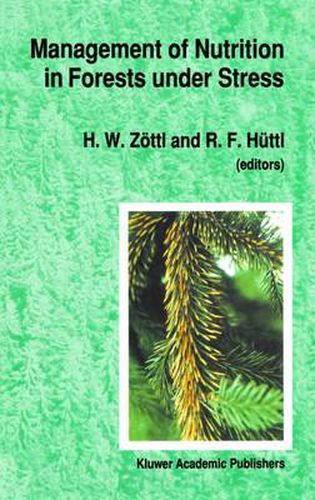Readings Newsletter
Become a Readings Member to make your shopping experience even easier.
Sign in or sign up for free!
You’re not far away from qualifying for FREE standard shipping within Australia
You’ve qualified for FREE standard shipping within Australia
The cart is loading…






This title is printed to order. This book may have been self-published. If so, we cannot guarantee the quality of the content. In the main most books will have gone through the editing process however some may not. We therefore suggest that you be aware of this before ordering this book. If in doubt check either the author or publisher’s details as we are unable to accept any returns unless they are faulty. Please contact us if you have any questions.
During the 1970s and 1980s, Sitka spruce (Picea sitchensis, Bong. Carr. ) was planted extensively on northern Vancouver Island (B. C. , Canada) to regenerate slashburned clearcuts previously occupied by old-growth Thuja p1icata, Donn, Tsuga heterophy11a, Raf. Sarg. , and an ericaceous unders tory shrub salal (Gaul ther ia sha11on, Pursh [CH sites 1 ) . The planted Sitka spruce grew well initially on these sites, but experienced nutritional stress and reduced growth 8 to 14 yr after planting (Germain, 1985; Weetman et a1. , 1990a,b). Accompanying the onset of the nutritional stress was the reestablishment of a complete ground cover of salal, and it has been suggested that there is a causal connection between these two temporally synchronous events (Weetman et al. , 1990a,b). Other ericaceous species have been implicated in nutritional stress in conifer plantations (Mallik, 1987; Robinson, 1972; Handley, 1963; Rose et a1. , 1983). Three hypotheses to explain this nutritional stress were tested in the study reported in this paper: (1) that salal competition for N can provide an adequate explanation for the observed nutritional stress; (2) that salal inhibits the availability of nutrients to seedlings by interfering with their mycorrhizae; and (3) that the fertility of these CH sites declines after 8 yr following clearcutting and slashburning due to the termination of the flush of nutrients (or assart effect ) associated with this disturbance. A series of pot and field experiments was carried out to test these hypotheses. 1 2.
$9.00 standard shipping within Australia
FREE standard shipping within Australia for orders over $100.00
Express & International shipping calculated at checkout
This title is printed to order. This book may have been self-published. If so, we cannot guarantee the quality of the content. In the main most books will have gone through the editing process however some may not. We therefore suggest that you be aware of this before ordering this book. If in doubt check either the author or publisher’s details as we are unable to accept any returns unless they are faulty. Please contact us if you have any questions.
During the 1970s and 1980s, Sitka spruce (Picea sitchensis, Bong. Carr. ) was planted extensively on northern Vancouver Island (B. C. , Canada) to regenerate slashburned clearcuts previously occupied by old-growth Thuja p1icata, Donn, Tsuga heterophy11a, Raf. Sarg. , and an ericaceous unders tory shrub salal (Gaul ther ia sha11on, Pursh [CH sites 1 ) . The planted Sitka spruce grew well initially on these sites, but experienced nutritional stress and reduced growth 8 to 14 yr after planting (Germain, 1985; Weetman et a1. , 1990a,b). Accompanying the onset of the nutritional stress was the reestablishment of a complete ground cover of salal, and it has been suggested that there is a causal connection between these two temporally synchronous events (Weetman et al. , 1990a,b). Other ericaceous species have been implicated in nutritional stress in conifer plantations (Mallik, 1987; Robinson, 1972; Handley, 1963; Rose et a1. , 1983). Three hypotheses to explain this nutritional stress were tested in the study reported in this paper: (1) that salal competition for N can provide an adequate explanation for the observed nutritional stress; (2) that salal inhibits the availability of nutrients to seedlings by interfering with their mycorrhizae; and (3) that the fertility of these CH sites declines after 8 yr following clearcutting and slashburning due to the termination of the flush of nutrients (or assart effect ) associated with this disturbance. A series of pot and field experiments was carried out to test these hypotheses. 1 2.